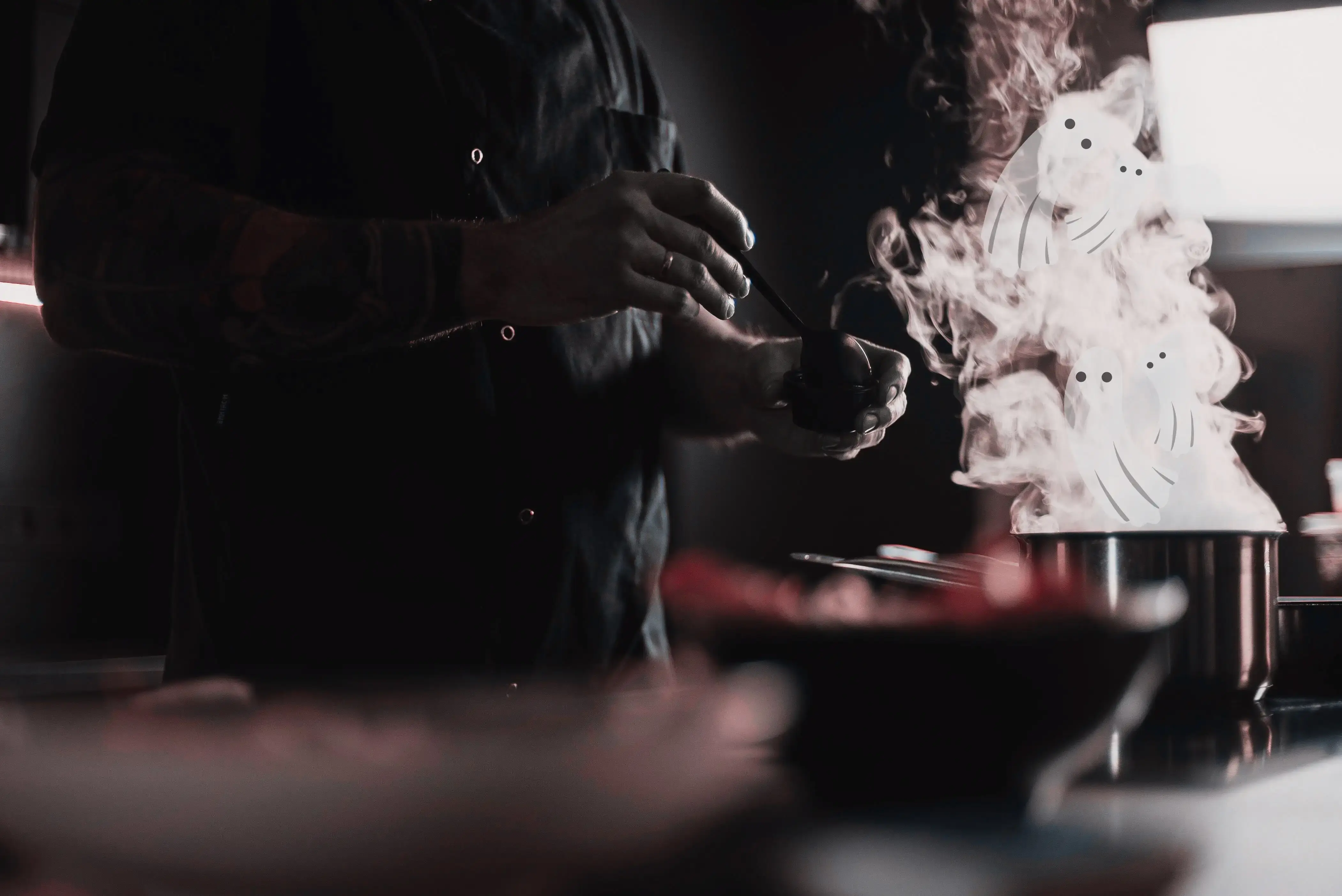You’ve probably encountered the new concept of "ghost kitchens" without realising it.
You get a delivery notification on your phone, but when you arrive at a location to pick up a meal there’s no storefront, no customers enjoying their meals inside. Just a catering kitchen hidden away in a warehouse or commercial unit. Welcome to the world of ghost kitchens - no tricks, just treats!
But while the name might sound like something made up for Halloween, ghost kitchens are here to stay. Whether you’re driving for food delivery apps like UberEats, Just Eats, Deliveroo, or other platforms, these kitchens can be game-changers for your delivery hustle. Let’s break it down.
What Exactly *Is* A Ghost Kitchen?
Ghost kitchens, or virtual kitchens, are a simple affair. They’re kitchens that exist purely for food delivery. No dine-in option and no wait staff - just chefs, an online menu, and a constant stream of orders coming in from hungry customers.
In many cases, a chef leases a kitchen in a large warehouse or shared commercial space and operates multiple restaurant brands from the same location. It might feel like you’re picking up from different restaurants when, in fact, you’re just collecting meals from the same kitchen operating under different names. One kitchen might churn out burgers, Korean chicken, and pizza all in one night. Sounds like culinary magic, right?
But the lack of a bricks-and-mortar restaurant doesn’t mean the work is easier. Many ghost kitchens take advantage of advanced tech - think iPads for order tracking, digital lockers for meal pickups, and a streamlined system that helps drivers collect multiple orders in one go. More food, less time on the road.

Why Are Ghost Kitchens Taking Over?
The rise of ghost kitchens can be traced back to some pretty logical business reasons (even if they sound a bit spooky). For traditional restaurants, running a dine-in service comes with huge overhead costs such as rent, utilities, waitstaff, decoration, and maintenance. Ghost kitchens avoid this by focusing solely on cooking and delivery. They’ve traded the dining room for efficiency.
For fast food delivery drivers, this can mean quicker pickups, especially since ghost kitchens are designed to optimise the process. You don’t need to wait for a waiter to package an order, and little to no front-of-house confusion. It’s a well-oiled machine (well, most of the time).
The Case of MrBeast’s Ghostly Mishap
Of course, not all ghost kitchens have been smooth sailing. YouTube giant MrBeast launched his "MrBeast Burger" through a network of ghost kitchens, generating a lot of hype. But not all press is good press, and soon after, customers were biting back with bad reviews. Some complained about cold, mushy burgers and poor quality control. Things got so bad that MrBeast himself filed a lawsuit against the company responsible for his burgers.
While this sounds like a tale from a food-based horror movie, it highlights one of the potential downsides of ghost kitchens: quality control. With no dining space, it’s harder to keep an eye on the food going out, leading to some messy results.
.jpg?width=357&height=268&name=MrBeast_Burger_03_(cropped).jpg) The MrBeast Burger
The MrBeast Burger
What Does This Mean for Fast Food Delivery Drivers?
Ghost kitchens could be a real treat in disguise to increase your efficiency. These kitchens are designed to minimise hassle, drivers should be in and out with minimal waiting around. You may even find setups where multiple orders are packed into lockers for contactless pickup. Just check in via a tablet, grab your food, and get back on the road. No queuing at a busy counter or waiting for a dine-in customer to finish their transaction.
With the potential for multiple restaurants under one roof, it could also mean a more fruitful run for you. Rather than darting across town from one restaurant to another, you might pick up a burger, sushi, and pasta all from the same location. More orders, more tips, and more time saved!
Beware the Ghostly Challenges
But driver beware, ghost kitchens aren’t without their risks. They’re often tucked away in industrial parks or back streets, making them harder to find. A quick heads-up: Always double-check your map, and watch out for cryptic locations that might leave you wandering through spooky, empty streets at night. The last thing you want is to feel like you’re delivering in a ghost town!
And, of course, remember that ghost kitchens aren’t immune to the same issues that plague traditional restaurants. Busy kitchens might lead to longer wait times, and sometimes quality can slip. Keep an eye out for those 1-star reviews—they can sometimes be a sign that a ghost kitchen is struggling to maintain consistency.
Tricks to Maximise Your Earnings
- Multiple orders from one spot: Some ghost kitchens will allow you to pick up multiple orders from different “restaurants” at once. Keep an eye out for these spots, as they can save you a lot of driving time.
- Ghost kitchen hotspots: Learn where the most active ghost kitchens in your area are located. These are often found in city centres or near high-demand areas, so make sure you’re in the right place during peak delivery hours.
- Timing is everything: Ghost kitchens typically experience surges in orders during peak hours (lunch and dinner). Plan your shifts to take full advantage of these busy times. More orders = more tips.
As ghost kitchens continue to grow in popularity, they’re becoming a bigger part of the delivery landscape. As a fast food delivery driver, understanding how they work and how they can impact your routes could help you thrive. So, while ghost kitchens might sound like a Halloween trick, they could be a delivery treat in disguise.
For an entertaining treat, check out Eddie Burback’s video about ghost kitchens, and how they work!

.png)
.png)
